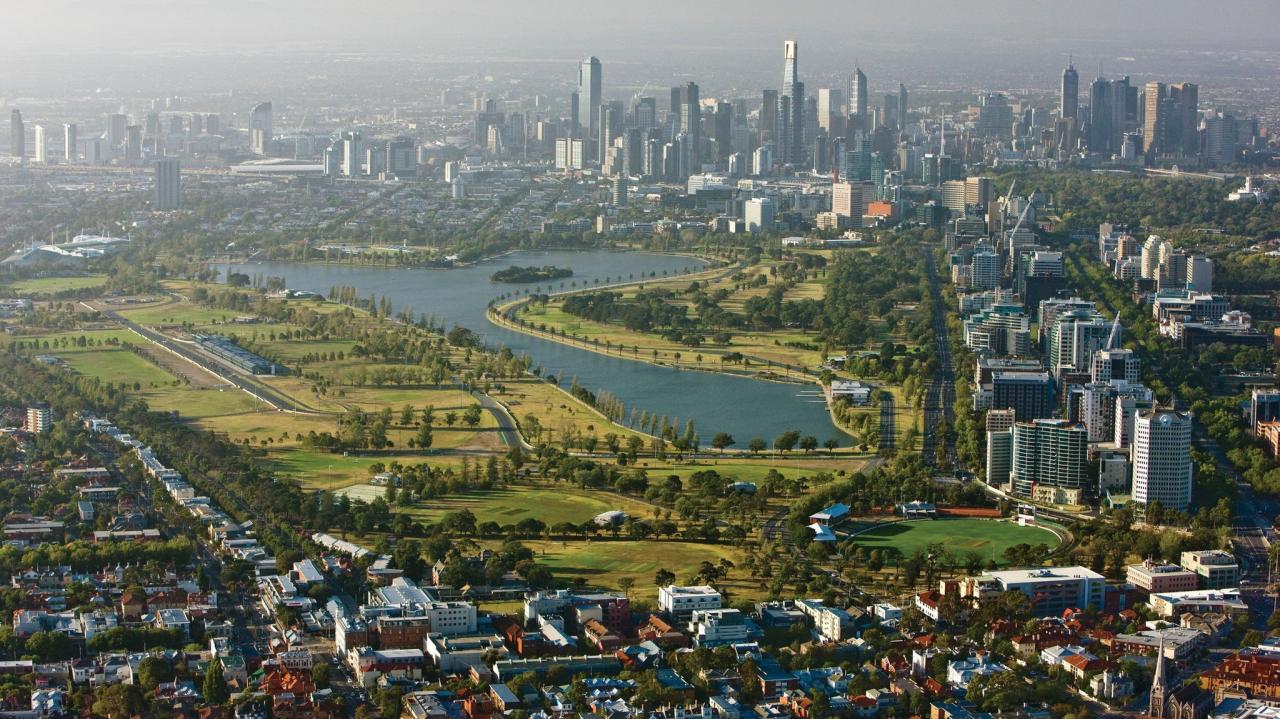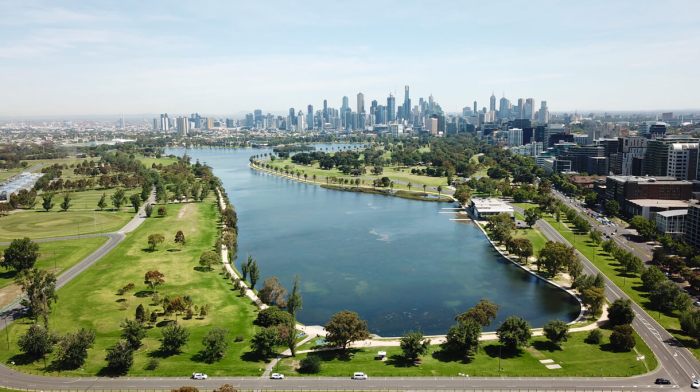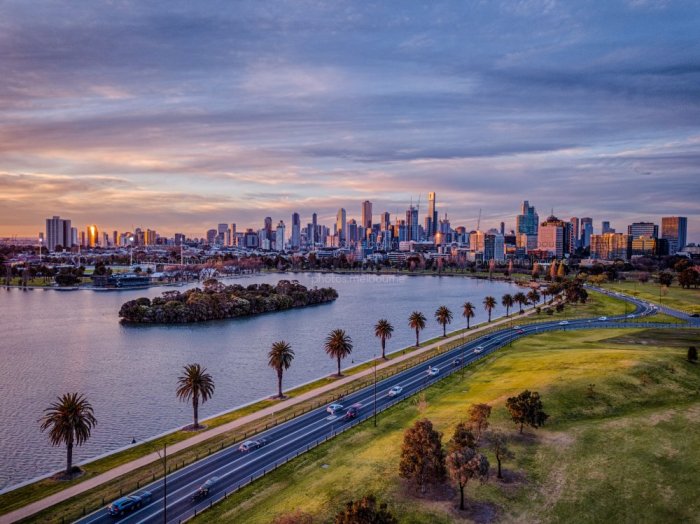At the heart of Melbourne’s vibrant cityscape, Albert Park Circuit stands as an iconic landmark in the world of motorsports. This street circuit, renowned for its unique layout and captivating history, has played a pivotal role in shaping the legacy of Formula 1 in Australia.
Since its inception in 1996, Albert Park has hosted some of the most thrilling and unforgettable races in F1 history. Its challenging layout, temporary nature, and proximity to the city center have made it a fan favorite and a true test of drivers’ skills.
Albert Park Circuit History

The Albert Park Circuit is a temporary street circuit located in Albert Park, Melbourne, Australia. It is the host of the Australian Grand Prix, which has been held at the circuit since 1996.
Albert Park, with its lush greenery and serene atmosphere, offers a perfect retreat for families. If you’re seeking more family-friendly destinations, explore our comprehensive guide to best family vacation spots. Upon your return, Albert Park awaits you with its picturesque lake, ideal for leisurely strolls or family picnics amidst nature’s tranquility.
The circuit was first used for motor racing in 1953, and it was originally known as the Lakeside Circuit. The circuit was renamed the Albert Park Circuit in 1996, in honor of Prince Albert, the consort of Queen Victoria.
Unique Characteristics
The Albert Park Circuit is a unique circuit, as it is one of the few street circuits on the Formula One calendar. The circuit is also temporary, which means that it is built and dismantled each year for the Australian Grand Prix.
The circuit is known for its challenging layout, which includes a number of tight corners and fast straights. The circuit is also known for its bumpy surface, which can make it difficult for drivers to keep their cars under control.
Interesting Anecdotes
There are a number of interesting anecdotes and stories related to the Albert Park Circuit. One of the most famous stories is about the 1996 Australian Grand Prix, which was won by Damon Hill. Hill was involved in a controversial collision with Michael Schumacher on the first lap of the race, and he was forced to pit for repairs. Hill was able to recover from the incident and win the race, but the collision remains one of the most controversial moments in Formula One history.
Track Layout and Design
The Albert Park Circuit is a 5.303-kilometer (3.3-mile) street circuit located in Albert Park, Melbourne, Australia. It consists of 16 turns, with a mix of high-speed straights and challenging corners.
Albert Park, known for its stunning lake and lush greenery, is a testament to sustainable urban planning. As the world embraces sustainable travel destinations , Albert Park stands out as an exemplar of balancing environmental preservation with community well-being. Its green spaces, eco-friendly initiatives, and focus on biodiversity conservation inspire travelers seeking responsible and immersive travel experiences.
The circuit’s design presents several technical challenges and opportunities for drivers. The long straights provide opportunities for overtaking, while the tight corners require precise handling and braking. The circuit also features several elevation changes, adding to the complexity of driving.
Track Layout
| Section | Length (km) | Number of Turns |
|---|---|---|
| Start/Finish Straight | 1.030 | 2 |
| Turn 1 (Jones) | 0.120 | 1 |
| Turn 2 (Whiteford) | 0.180 | 1 |
| Turn 3 (Ascari) | 0.220 | 1 |
| Turn 4 (Stoner) | 0.180 | 1 |
| Turn 5 (Stewart) | 0.150 | 1 |
| Turn 6 (Brock) | 0.240 | 1 |
| Turn 7 (Robertson) | 0.160 | 1 |
| Turn 8 (Dunlop) | 0.240 | 1 |
| Turn 9 (McPherson) | 0.220 | 1 |
| Turn 10 (Ascari Chicane) | 0.100 | 2 |
| Turn 11 (Lauda) | 0.100 | 1 |
| Turn 12 (Pit Lane) | 0.100 | 1 |
| Turn 13 (Clark) | 0.150 | 1 |
| Turn 14 (Fishers) | 0.120 | 1 |
| Turn 15 (Rindt) | 0.150 | 1 |
| Turn 16 (Braham) | 0.160 | 1 |
Notable Races and Moments
Albert Park has witnessed some of the most iconic races and moments in Formula 1 history. These events have shaped the sport and left an enduring legacy on the sport.
One of the most memorable races at Albert Park was the 1996 Australian Grand Prix. Damon Hill, in his Williams, battled Michael Schumacher’s Ferrari in a thrilling duel that went down to the final lap. Hill ultimately emerged victorious, securing his first Formula 1 victory.
1996 Australian Grand Prix
- Damon Hill’s first Formula 1 victory.
- A thrilling duel between Hill and Schumacher that went down to the final lap.
- A significant moment in the rivalry between Williams and Ferrari.
Another unforgettable race at Albert Park was the 2009 Australian Grand Prix. Jenson Button, driving for Brawn GP, took a surprise victory, becoming the first British driver to win the race since David Coulthard in 1997.
2009 Australian Grand Prix
- Jenson Button’s unexpected victory.
- The first win for the newly formed Brawn GP team.
- A resurgence of British success in Formula 1.
In 2015, Lewis Hamilton claimed a dominant victory at Albert Park, securing his second Australian Grand Prix win. Hamilton’s performance was a testament to his skill and the dominance of the Mercedes team during that era.
Albert Park is a beautiful place to visit, with its lush green spaces and stunning views of the city. If you’re looking for a more adventurous getaway, consider a trip to alaskausa. Alaska offers a wide variety of activities, from hiking and fishing to whale watching and glacier trekking.
And after a day of exploring, you can relax in one of Alaska’s many charming lodges or resorts. Of course, if you’re looking for a more laid-back vacation, Albert Park is still a great option. With its many restaurants, cafes, and shops, there’s something for everyone to enjoy.
2015 Australian Grand Prix
- Lewis Hamilton’s second Australian Grand Prix victory.
- A demonstration of Hamilton’s skill and the dominance of Mercedes.
- A memorable moment in Hamilton’s illustrious career.
These are just a few of the many memorable races and moments that have taken place at Albert Park. The circuit has become synonymous with thrilling racing and iconic victories, and it continues to be a highlight of the Formula 1 calendar.
Impact on Melbourne and Australia: Albert Park

The Albert Park Grand Prix has had a significant economic, social, and cultural impact on Melbourne and Australia. The event attracts a large number of tourists to the city, and the associated spending provides a boost to the local economy.
The Grand Prix has also led to the development of new infrastructure in Melbourne, including the construction of the Albert Park Circuit and the surrounding parklands. These developments have improved the city’s amenity and have made it a more attractive place to live and visit.
Tourism
- The Albert Park Grand Prix attracts a large number of tourists to Melbourne, both from within Australia and overseas.
- In 2019, the event generated an estimated $1.2 billion in economic activity for the city.
- The Grand Prix is a major drawcard for international tourists, and it helps to promote Melbourne as a global destination.
Infrastructure Development
- The Grand Prix has led to the development of new infrastructure in Melbourne, including the construction of the Albert Park Circuit and the surrounding parklands.
- The Albert Park Circuit is a world-class facility, and it has been used to host a number of other major motorsport events, including the Australian Formula 1 Grand Prix.
- The surrounding parklands have been developed into a popular recreation area, and they are used by locals and tourists alike.
Community Engagement
- The Grand Prix has helped to foster a sense of community in Melbourne.
- The event brings people together from all walks of life, and it provides an opportunity for locals and tourists to interact.
- The Grand Prix also supports a number of community initiatives, including the Albert Park Grand Prix Foundation, which provides grants to local charities.
Environmental Considerations

The Albert Park Grand Prix has taken significant steps to minimize its environmental impact. Its temporary nature and the implementation of sustainable practices have played a crucial role in reducing its environmental footprint.
Circuit’s Temporary Nature
Unlike permanent circuits, Albert Park is dismantled after each race, which reduces its long-term environmental impact. The temporary infrastructure, such as grandstands and track barriers, is designed to be easily removed and reused, minimizing waste and disruption to the surrounding parkland.
Sustainable Practices, Albert park
The circuit has adopted a range of sustainable practices, including:
- Waste Management: Comprehensive waste management plans ensure proper disposal and recycling of waste generated during the event.
- Energy Efficiency: The use of renewable energy sources, such as solar panels, reduces the circuit’s carbon footprint.
- Water Conservation: Efficient water usage systems and rainwater harvesting minimize water consumption.
- Sustainable Procurement: The circuit prioritizes purchasing from suppliers who adhere to sustainable practices.
Innovative Solutions
The Albert Park Grand Prix has implemented innovative solutions to promote sustainability, such as:
- Electric Vehicle Charging Stations: The circuit provides charging stations for electric vehicles, encouraging attendees to reduce their carbon emissions.
- Green Technology Partners: Partnerships with green technology companies support the development and implementation of sustainable solutions.
- Environmental Education: The circuit promotes environmental awareness through educational initiatives and partnerships with local organizations.
Last Point

As the sun sets on another exhilarating race weekend at Albert Park, the circuit’s legacy continues to grow. Its economic, social, and cultural impact on Melbourne and Australia is undeniable, leaving an enduring mark on the nation’s sporting and cultural landscape.
Albert Park stands as a testament to the power of motorsports to captivate, inspire, and bring people together. As the engines roar and the checkered flag waves, the circuit’s legend will continue to be etched in the annals of Formula 1 history.
FAQ Section
When was the first Formula 1 race held at Albert Park?
1996
How long is the Albert Park Circuit?
5.303 kilometers (3.3 miles)
How many turns are there on the Albert Park Circuit?
16